Are you searching for the perfect camera to enhance your graphic design projects or any other creative work?
Whether you’re capturing images for clients or building your own portfolio, we’ve got you covered! In this guide, we’ll highlight the best cameras for creative professionals, whether you’re into graphic design, blogging, vlogging, video production, YouTube content creation, filmmaking, and more.
Be sure to check out our guide at the end for tips on how to choose the right camera for your needs.
1. Sony a7 III
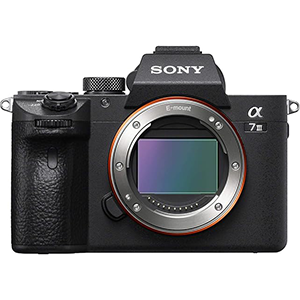
Now in its third iteration, Sony’s A7 series of mirrorless cameras is truly making strides, offering a standout option in the competitive full-frame mirrorless market.
One of its key features, Eye AF, works effortlessly with AF-C mode, providing fast and accurate eye detection even with moving subjects. This is a game-changer for portrait photography, ensuring razor-sharp focus on your subject’s eyes.
We’re particularly impressed with the newly developed back-illuminated image sensor and advanced image processing. This powerful combination delivers stunning clarity and detail, even in challenging lighting conditions. It’s like having the quality of a full-frame camera packed into a compact body.
The high-precision stabilization unit, along with gyro sensors and advanced algorithms, offers a significant 5.0-stop advantage in reducing camera shake, perfect for capturing sharp, professional-looking images.
Silent shooting at up to 10 fps with AF/AE tracking is another standout feature, ensuring that even the slightest noise won’t cause you to miss the perfect shot.
With 693 phase-detection AF points covering approximately 93% of the image area and an additional 425 densely positioned contrast-detection AF points, this camera delivers rapid and precise autofocus, making it versatile for various photography needs.
However, one drawback is the lack of an in-body flash, which can be inconvenient for quick, spontaneous lighting. Fortunately, external flash options are available.
Pros
- Dual SD slots
- 10fps with tracking
- 4K HDR video
- Silent shooting available
- Tilting touch LCD
Cons
- Only one card slot is UHS-II
- No in-body flash
- Dense menu system
2. Nikon Z6
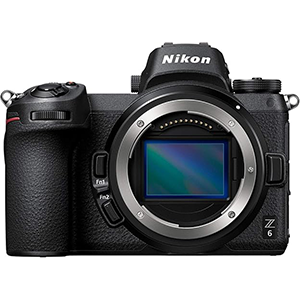
The Nikon Z6 stands out as a fantastic all-around camera, offering an unbeatable combination of versatility, affordability, and usability. It’s hard to find another camera on the market that matches the Z6 in delivering such a well-rounded experience.
This camera’s impressive features come together to provide top-notch performance. With a 24.5 MP Full-Frame BSI image sensor and Nikon’s advanced EXPEED 6 image processor, the Z6 excels at capturing sharp, vibrant, and high-resolution photos and videos—living up to Nikon’s esteemed reputation.
A major differentiator is the new Z Mount, which boasts the widest lens mount in full-frame cameras. This design allows more light to enter, enhancing performance and expanding dynamic range. It also paves the way for innovative lens designs, including those with ultra-wide apertures up to f/0.95.
Connectivity is another strong suit of the Z6. It supports easy transfer of photos and videos to your smartphone via Wi-Fi or Bluetooth through the Nikon SnapBridge app. Plus, you can use your smartphone as a remote monitor to perfectly frame your shots.
The silent shooting mode is particularly useful for capturing moments discreetly, such as during recitals, weddings, or newborn photography sessions.
For videographers, the Z6 is a powerful tool. It offers 4K video recording with a sensor that ensures high-quality footage, making it an excellent choice for video marketing and content creation.
Its fast and accurate autofocus, featuring 273 on-sensor AF points that cover approximately 90% of the frame, ensures quick subject acquisition and seamless tracking, even at the edges. Portrait photographers will appreciate the Eye-Detection AF feature, which locks focus on the subject’s eye, especially useful when dealing with dynamic poses or multiple subjects.
The camera also includes Animal Detection AF, which focuses precisely on the eyes of dogs or cats and maintains focus during video recording. Additionally, the Subject Tracking AF feature keeps the focus steady on your subject, whether you’re using the electronic viewfinder (EVF) or the LCD screen, even if the subject moves or briefly exits the frame.
The in-body 5-axis VR image stabilization is compatible with all Nikon Z lenses, providing up to five stops of stabilization across yaw, pitch, roll, X, and Y axes. This ensures your shots remain steady and sharp, even in challenging conditions.
One potential drawback is the single card slot, which could be a concern for professionals working on critical projects that require redundant storage or quick card swaps. However, this limitation is outweighed by the camera’s exceptional capabilities, making it a top choice for creative professionals.
Pros
- High ISO performance
- Eye-detection AF for stills
- 12fps burst speeds
- Fast cycle times
- Good buffer depths
- 4K focus peaking
- Rugged build quality
- Organized menus
Cons
- Single card slot
- The rear display does not swivel
3. Nikon D850
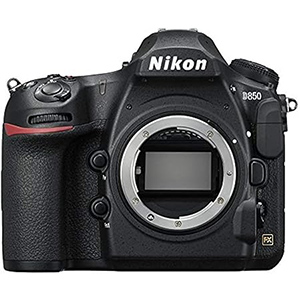
In today’s camera market, where mirrorless models dominate the top ten lists, you might think that DSLR cameras have had their moment. However, the Nikon D850 continues to prove just how exceptional DSLRs can be.
With a stunning 45MP resolution, this camera is ideal for those seeking high-resolution images and 4K video recording. Its rugged body ensures durability, protecting it from harsh environments.
One standout feature that sets the D850 apart from its mirrorless competitors is its impressive battery life. With up to 1,800 shots per charge, running out of power will be the least of your worries.
Pros
- Excellent dynamic range
- High ISO performance
- Improved JPEG image quality compared to its predecessor
- Quick start-up
- Low shutter lag
- Robust body
- 7fps burst mode
Cons
- Limited AF point coverage when using an optical viewfinder
- 30-minute limit on video clips
- No built-in flash
- Electronic VR and focus peaking not supported in 4K video
4. Nikon Z 50
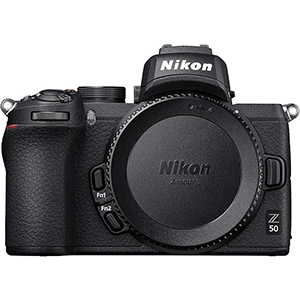
While the Z6 tops our list, its price might be a bit steep for those with smaller budgets.
Enter the Z50—a fantastic choice if you’re in the market for a high-quality, mid-range APS-C camera. It’s also an excellent option if you’re transitioning from DSLR to mirrorless.
The Z50 is designed with a deep grip, prioritizing comfortable handling. Its excellent viewfinder and tilting touchscreen make it easy to capture stunning photos, whether you’re shooting general scenes or travel photos. The autofocus system also performs exceptionally well on static subjects.
Pros
- 4K video with 11fps continuous shooting
- Good image quality
Cons
- Single UHS I SD card slot
- No built-in image stabilization
- 300-shot battery life
5. CANON EOS Rebel SL3/ EOS 250D
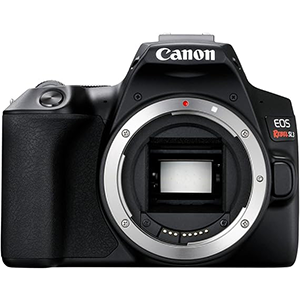
The Canon EOS 250D is one of the best DSLRs for beginners, offering the distinction of being the world’s smallest DSLR with a fully articulating screen—perfect for vloggers.
This camera features 4K recording and a new processor, enhancing its 24.2MP sensor to give your photos that extra edge. The fluid AF system shines when you’re shooting in live view or recording videos.
With an easy-to-navigate interface and an affordable price, the EOS 250D is an excellent first choice for anyone new to DSLRs.
Pros
- Great choice for students
- Good image quality
- Extensive lens range
- 4K video recording
- Lightweight body
Cons
- Limited 9-point autofocus system
- No in-body image stabilization
- Not compatible with third-party flash units
How to Choose a Camera for Graphic Design
Shopping for the best digital camera for your graphic design projects can quickly become overwhelming, leaving you frustrated and ready to give up.
To make the process easier, let’s break down the key factors you should consider so you don’t feel lost when browsing through options.
Key Considerations:
- Your Budget
- The Different Types of Cameras Available
- The Features & Quality Required for Your Creative Needs
Conclusion
Finding the right camera for your needs can be challenging with so many options available. Our list of the Best Cameras for Creatives in 2024 is designed to help you identify some top contenders.

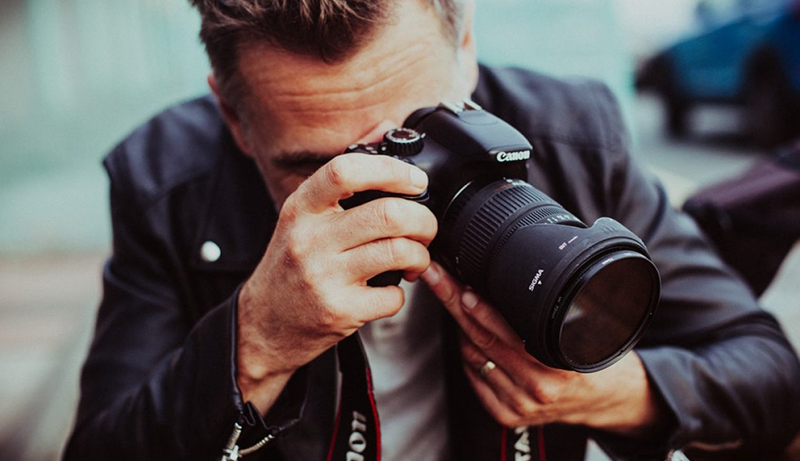
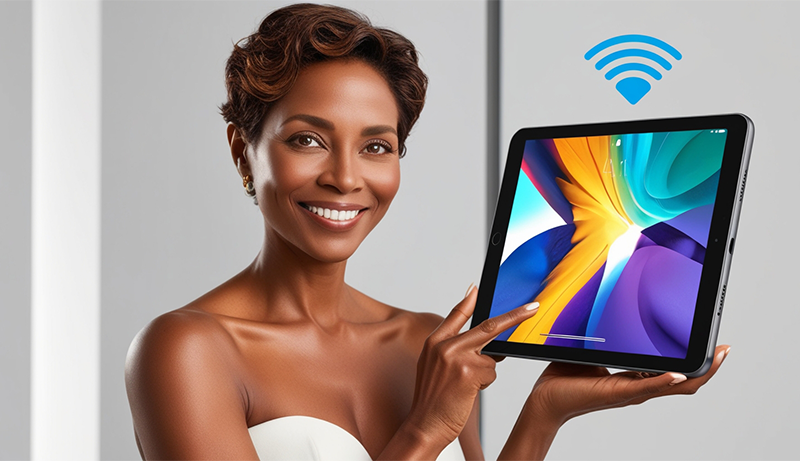
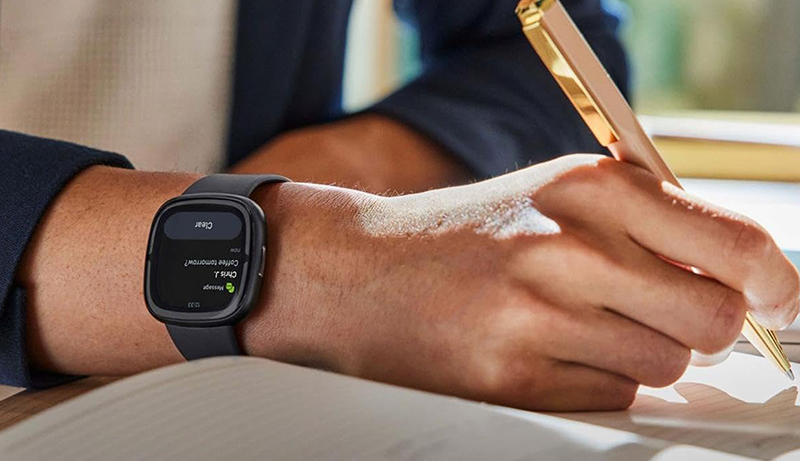
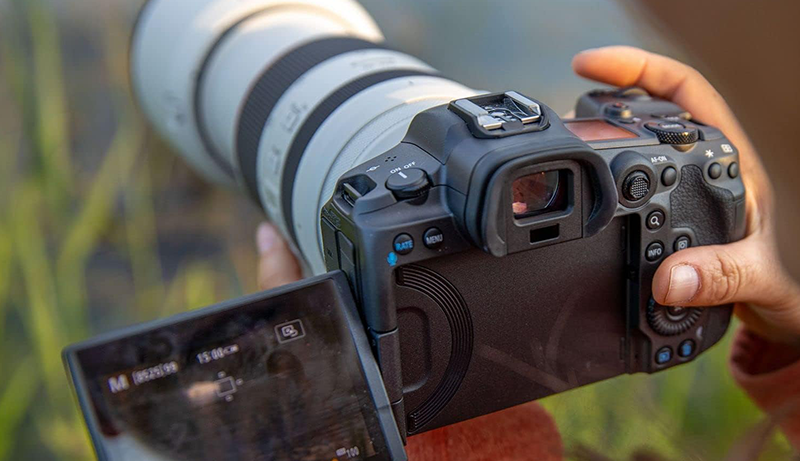
Leave a Reply